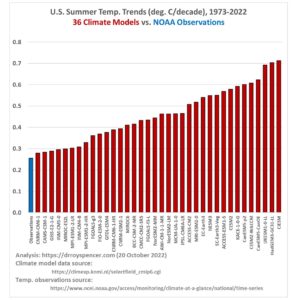by C. Rotter, Oct 20, 2022 in WUWT
This CO2 stuff is…pure delusion. You cannot find any signature of that.
…
Dr. Soon was an astrophysicist at the Solar, Stellar and Planetary Sciences Division of the Harvard-Smithsonian Center for Astrophysics, from 1991-2022. He served as receiving editor for New Astronomy from 2002-2016, astronomer at the Mount Wilson Observatory from 1992-2009. He is also on the editorial board of Geoscience, an MDPI publication since 2020 as well as serving as Review Editor of Frontiers in Earth Science starting 2022. Dr. Soon has also held the role of visiting professors at various institutions including University of Putra, Malaysia, Institute of Earth Environment of Xian, China and State Key Laboratory of Marine Environmental Science at Xiamen University. Since September 2021, Dr. Soon is also affiliated with Hungary’s Institute of Earth Physics and Space Science.
Dr. Soon earned bachelor’s and master’s degrees in science and a Ph.D. in aerospace engineering from the University of Southern California.“The whole point of science is to question accepted dogmas. For that reason, I respect Willie Soon as a good scientist and a courageous citizen.’’ — Freeman Dyson in the Boston Globe, November 5, 2013
About Willie Soon: https://www.ceres-science.com/willie-soon
103 of his peer-reviewed papers: https://lweb.cfa.harvard.edu/~wsoon/
“How much has the Sun influenced Northern Hemisphere temperature trends? An ongoing debate”: https://iopscience.iop.org/article/10.1088/1674-4527/21/6/131
CERES news: https://www.ceres-science.com/news
Please help support independent science by donating to CERES-science.com:
https://www.ceres-science.com/support-us
——
Tom Nelson’s Twitter: https://twitter.com/tan123
Substack: https://tomn.substack.com/
About Tom: https://tomnelson.blogspot.com/2022/03/about-me-tom-nelson.html
Notes for climate skeptics:
https://tomnelson.blogspot.com/2019/06/useful-notes-for-climate-skeptics.html

